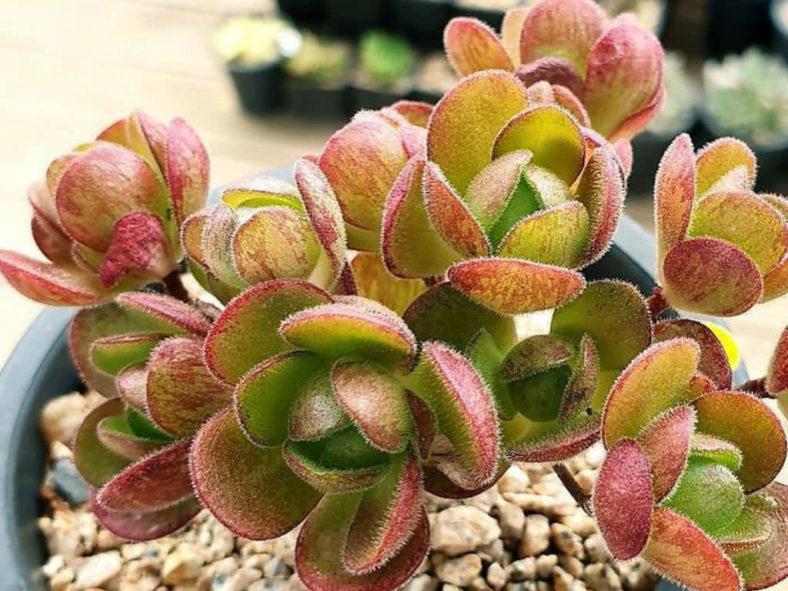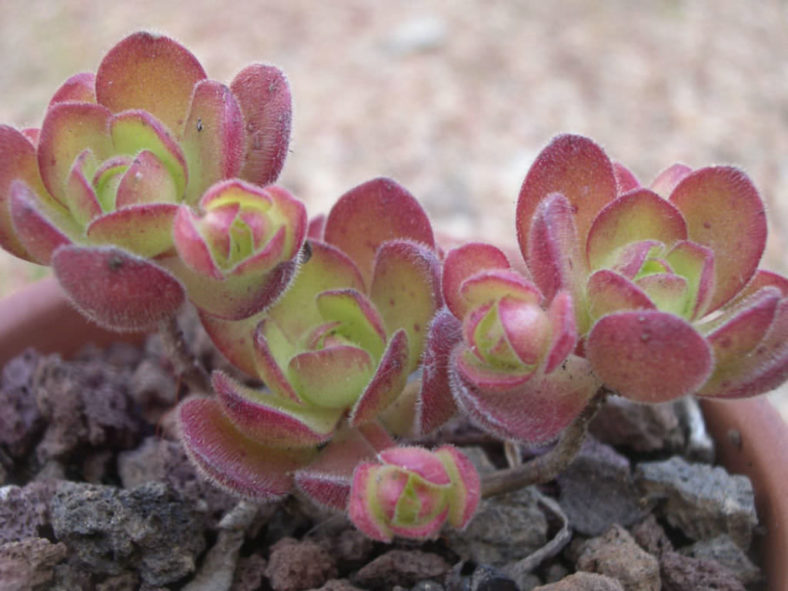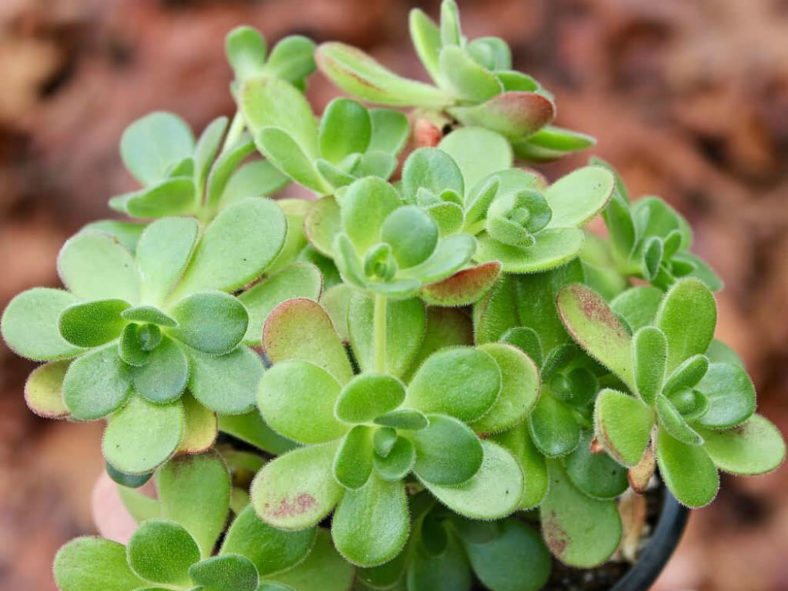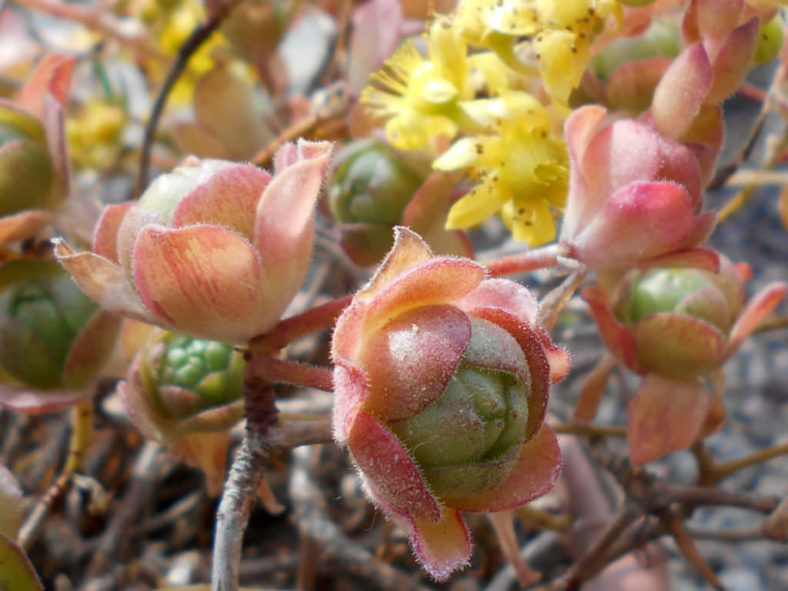Scientific Name
Aeonium saundersii Bolle
Common Name(s)
Martian Heads Aeonium, Martian Heads, Gomera Dwarf Aeonium
Synonym(s)
Aldasorea saundersii, Sempervivum saundersii
Scientific Classification
Family: Crassulaceae
Subfamily: Sempervivoideae
Tribe: Aeonieae
Genus: Aeonium
Origin
Aeonium saundersii grows naturally on steep slopes, sometimes north-facing, on the Island of Gomera in the Canary Islands.
Description
Aeonium saundersii is a densely branched succulent shrublet that forms small rosettes on delicate stems. It can grow up to 12 inches (30 cm) tall. The rosettes have 10 to 15 fleshy, green, rounded leaves with hairs and a hint of red along the margins that show from the hairy red underside. When crushed, the leaves are pleasantly scented and can grow up to 1.4 inches (3.5 cm) long and 0.5 inches (1.3 cm) wide.
The flowers are lemon-yellow and appear in mid-spring. They are followed by the leaves darkening and curling inwards to ball up like a fist to conserve moisture for summer dormancy.

Hardiness
USDA hardiness zones 9a to 11b: from 20 °F (−6.7 °C) to 50 °F (+10 °C).
How to Grow and Care
Aeoniums do not like hot or dry weather. Therefore, they may go dormant in summer and not require any water except in arid conditions. In extreme heat, their leaves will curl to prevent excessive water loss. Growing them in moist shade will keep them growing, but their true growth season is winter to spring when temperatures are cool, 65 to 75 °F (18 to 24 °C), and damp. In the winter, water whenever the soil has dried out. Test by poking your finger down into the soil an inch or 2 (2.5 to 5 cm). Too much moisture or allowing them to sit in wet soil will cause root rot.
A sandy loam or regular potting mix is better than a mix specifically for cacti and succulents since Aeonium needs some moisture. If you grow them in containers, repot them with fresh potting soil every 2 to 3 years.
Feed during the growing season with a half-strength balanced fertilizer every month or so. Do not feed while dormant.
Learn more at How to Grow and Care for Aeonium.
Links
- Back to genus Aeonium
- Succupedia: Browse succulents by Scientific Name, Common Name, Genus, Family, USDA Hardiness Zone, Origin, or cacti by Genus
Photo Gallery
Click on a photo to see a larger version.


